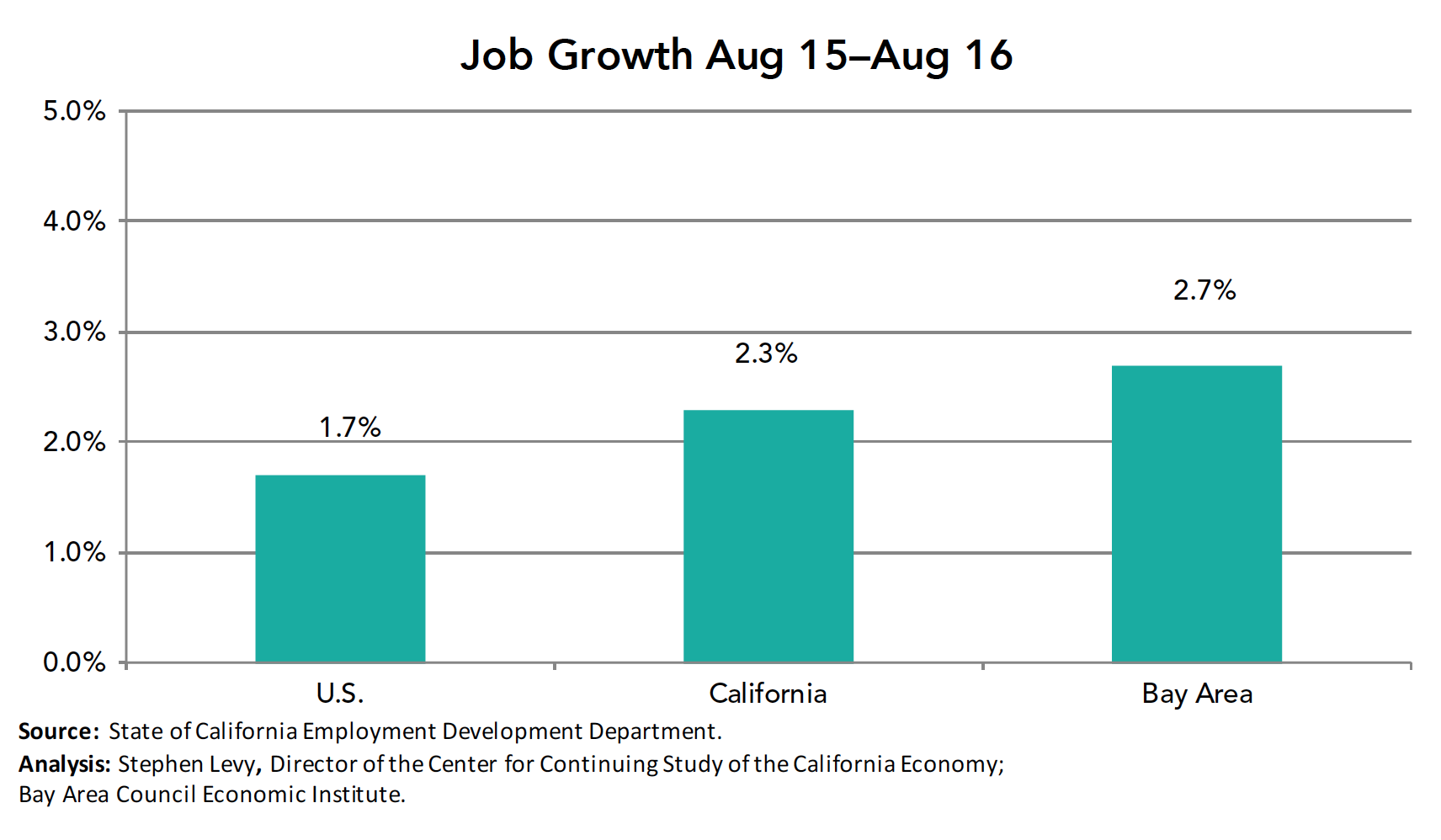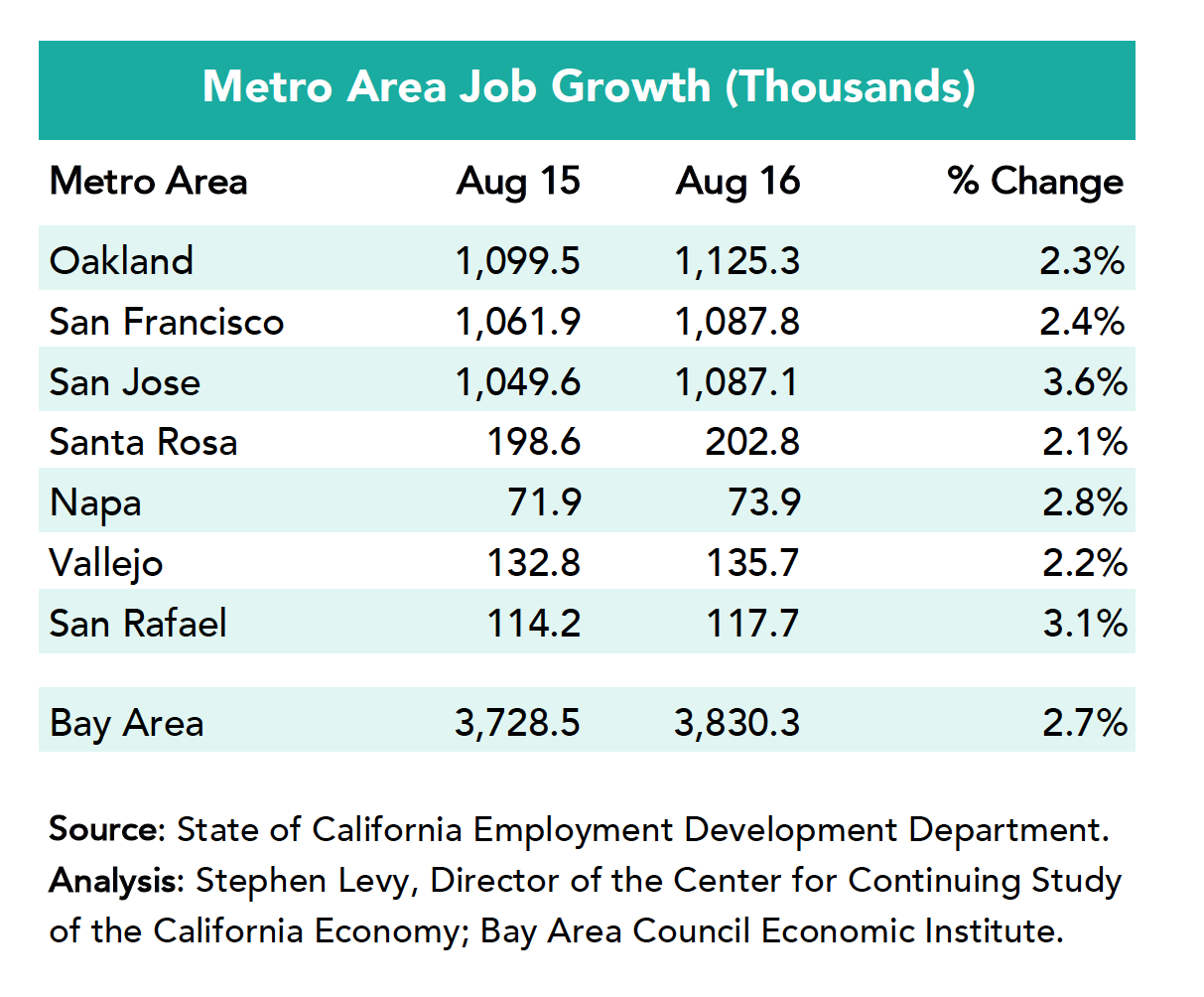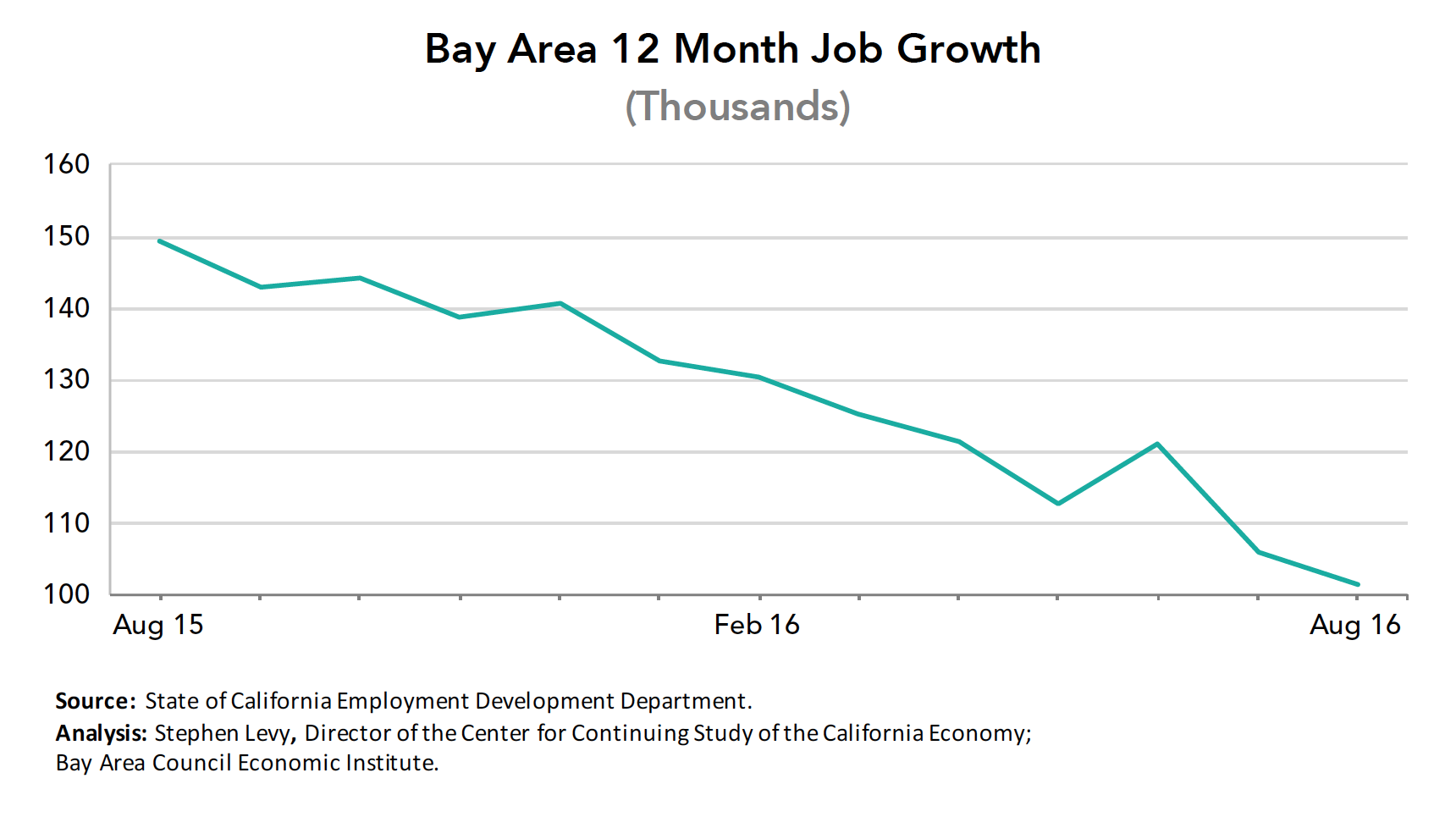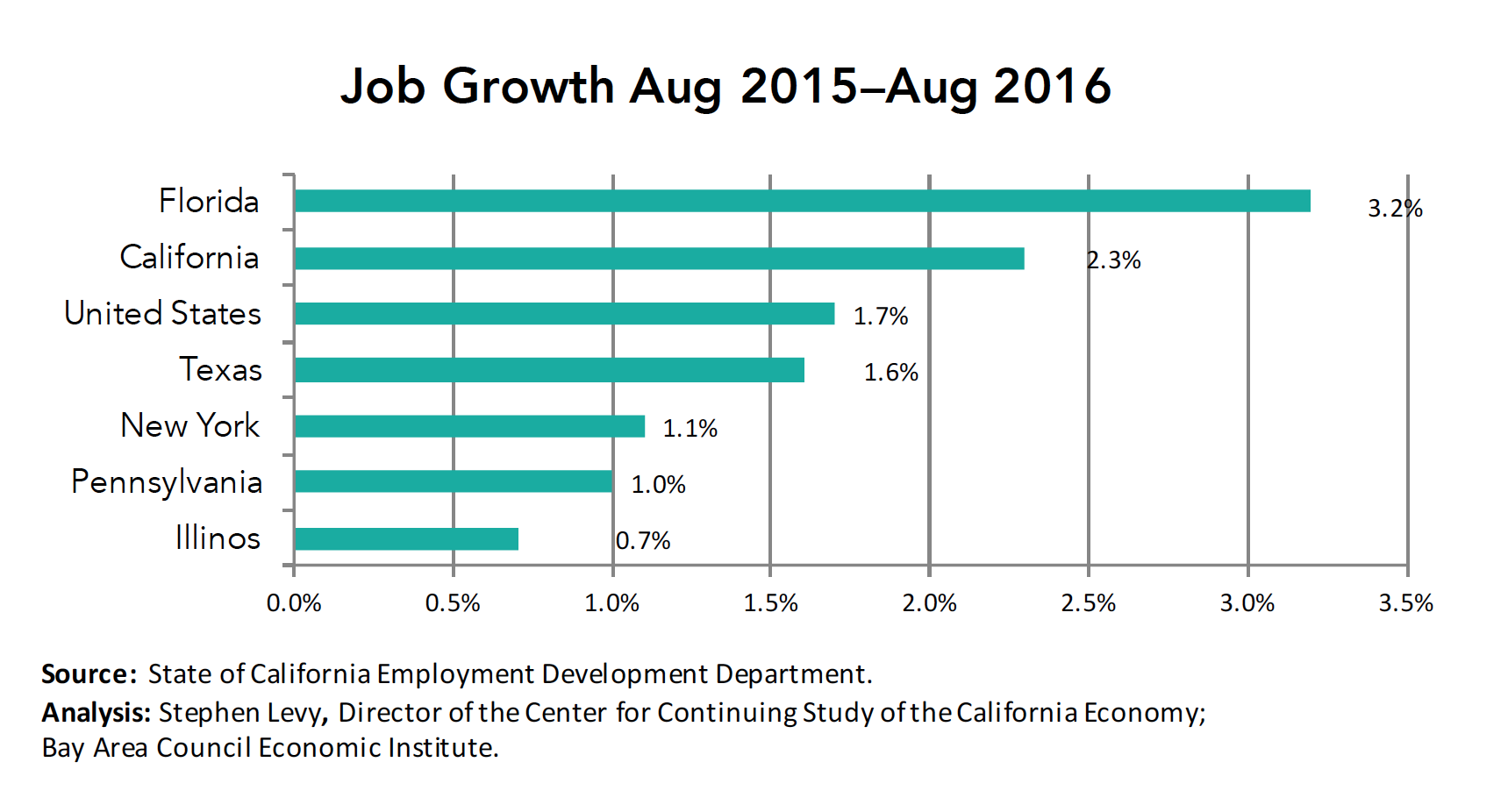
The California Employment Development Department (EDD) has released job estimates for August 2016. Here are the highlights:
Year over year growth slowing, but still strong
The region added 101,800 jobs between August 2015 and 2016 for a gain of 2.7% compared to 1.7% for the nation and 2.3% for California. The pace of growth has slowed from the mid-summer 2015 highs although year over year gains remain robust. The state jobs report showed a gain of 63,100 jobs in August but the Bay Area added only 4,000 jobs seasonally adjusted, an estimate that is likely to be revised up as it is implausible that the region added barely 5% of the state gains.
The job gains continue to reduce unemployment rates while the labor force continues to add workers.

Year over year job growth slowed in June as discussed above but remains far above the national average in all metro areas.

Possibly the most impressive statistic in the August report is the very strong increase in the region’s labor force. In the past 12 months 92,400 workers have joined the labor force (+2.2%) far outpacing the 1.0% population increase. While monthly labor force participation rate estimates are not available, it must be true from these numbers that the region’s force participation rate has jumped while the comparable state and national rates are under pressure from baby boomer retirement.
This means that economic growth is slowly reaching more people in the region and that is good news. Not everyone is fully participating but the trend is toward improvement.
While year over year job gains have declined slightly from mid 2015 peaks, they remain in very healthy territory with no signs of a significant loss of competitive advantage. Job growth rates in 2016 are likely to be the peak going forward as baby boomer retirements are slowing labor force growth.

The California job growth trends put the state near of the top of the nation’s most populous states, in part because job growth has accelerated in Southern California and parts of the Central Valley including San Joaquin County adjacent to the Bay Area and also in Fresno County.

The continuing job growth now that unemployment rates have fallen will bring new residents to the region as will the growing need to replace retiring workers.
All of these trends underscore the importance of policies to increase housing and make sure that housing and transportation challenges do not undermine the region’s still vibrant economic competitiveness.